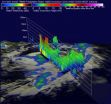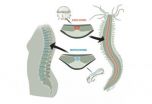(Press-News.org) JACKSONVILLE, Fla., Sept. 12, 2014 — Physicians envision a future in which genomic data from patients is heavily used to manage care — but experts have questioned the accuracy and reliability of these analyses. Now, a study by 150 researchers in 12 countries finds real strength and agreement across RNA genomic sequencing techniques and laboratories — as well as ways to improve what little variability exists to set a new high standard.
The results of the study were published in Nature Biotechnology in three separate research articles.
These results should provide assurance to patients, clinicians and the research community that genomic sequencing is accurate, says E. Aubrey Thompson, Ph.D., a professor of cancer biology at Mayo Clinic in Florida, one of three institutions that led the study. Dr. Thompson is a study co-author and member of the project leadership.
"It seems very likely that decisions about patient care are going to be influenced by genomic data, derived from sequencing both RNA and DNA from patient samples, and we now know the extent to which these sequence-based analyses can be relied upon within a given laboratory or from laboratory to laboratory," he says.
"That means that results of a patient's sample, from which clinical management decisions will likely be made, will be accurate worldwide," says Dr. Thompson.
RNA sequencing is being used with increasing frequency to characterize a growing array of conditions — everything from prenatal birth defects to disorders of the elderly.
The other institutions involved in the study are the Beijing Genomic Institute and Weill Cornell Medical School. All three institutions have extensive experience in sequencing RNA and have helped develop novel analytical tools for interpreting the data.
The U.S. Food and Drug Administration (FDA) funded the research, given its need to understand the accuracy of such data submitted in applications for approval of new drugs, clinical applications and genomic diagnostic procedures, Dr. Thompson says.
The purpose of this project, known as Sequence Quality Control (SEQC), was to rigorously define both the scope and the sources of variation in RNA sequencing data.
Laboratory groups at the three leading institutions sequenced the same two RNA samples multiple times.
More than 1 billion nucleotides of sequencing data were generated by each site. The data were then analyzed under the direction of the FDA with the assistance of a large group of academic and industrial statisticians. The researchers also examined the current technologies and major biochemical methods of 30 RNA-sequencing labs and hundreds of researchers. The researchers also found that RNA can be accurately extracted and analyzed from severely degraded genetic samples, such as from tissue samples that have been stored for many years.
"It was determined that there is very strong agreement between the sequence data generated by experienced sequencing laboratories," Dr. Thompson says. "The studies now establish the best practice for all laboratories to use, so that results are reliable and reproducible across laboratories."
INFORMATION:
About Mayo Clinic
Recognizing 150 years of serving humanity in 2014, Mayo Clinic is a nonprofit worldwide leader in medical care, research and education for people from all walks of life. For more information, visit 150years.mayoclinic.org, MayoClinic.org or newsnetwork.mayoclinic.org/.
MEDIA CONTACT: Kevin Punsky, Mayo Clinic Public Affairs, 904-953-0746.
Email: punsky.kevin@mayo.edu
Worldwide study demonstrates accuracy of genetic analyses
2014-09-12
ELSE PRESS RELEASES FROM THIS DATE:
Tropical Storm Odile taken on by 2 NASA satellites
2014-09-12
As Tropical Storm Odile continues to affect Mexico's west coast and stir up dangerous surf, NASA's TRMM and Aqua satellites provided forecasters information on clouds and rainfall in the coast-hugging storm. On September 12, A Tropical Storm Watch remained in effect from Manzanillo to Cabo Corrientes, Mexico.
Tropical Storm Odile formed on September 10, 2014 in the same area where Norbert formed.
Gathering Rainfall and Thunderstorm Height Information
The Tropical Rainfall Measuring Mission or TRMM satellite flew over tropical storm Odile on September 11, 2014 at ...
CCNY analysis explains rich bird biodiversity in Neotropics
2014-09-12
Applying analyses designed by City College of New York biologist Mike Hickerson, a team of international researchers is challenging a commonly held view that explains how so many species of birds ended up in the Neotropics, an area rich in rain forest extending from Mexico to the southernmost tip of South America. It is home to the most bird species on Earth.
"The unanswered question has been—how did this extraordinary bird diversity originate?" said Dr. Brian Smith, lead author of a paper on the subject published in the journal Nature this week and an assistant curator ...
Fluid mechanics suggests alternative to quantum orthodoxy
2014-09-12
The central mystery of quantum mechanics is that small chunks of matter sometimes seem to behave like particles, sometimes like waves. For most of the past century, the prevailing explanation of this conundrum has been what's called the "Copenhagen interpretation" — which holds that, in some sense, a single particle really is a wave, smeared out across the universe, that collapses into a determinate location only when observed.
But some founders of quantum physics — notably Louis de Broglie — championed an alternative interpretation, known as "pilot-wave theory," which ...
Corn spots: Study finds important genes in defense response
2014-09-12
When corn plants come under attack from a pathogen, they sometimes respond by killing their own cells near the site of the attack, committing "cell suicide" to thwart further damage from the attacker. This cell sacrifice can cause very small, often microscopic, spots or lesions on the plant.
But up until now it's been difficult to understand how the plant regulates this "spotty" defense mechanism because the response is so quick and localized.
Researchers at North Carolina State University have identified a number of candidate genes and cellular processes that appear ...
Experts call for massive global response to tackle Ebola
2014-09-12
AUDIO:
Professor Peter Piot, Director of the London School of Hygiene & Tropical Medicine, explains how he co-discovered the Ebola virus in 1976, and gives his views on the current Ebola...
Click here for more information.
The current Ebola outbreak now requires a "rapid response at a massive global scale", according to experts at the London School of Hygiene & Tropical Medicine.
Writing an editorial in Science, Professor Peter Piot, co-discoverer of the virus, says that the ...
Stanford-led study assesses the environmental costs and benefits of fracking
2014-09-12
A strange thing happened on the way to dealing with climate change: Advances in hydraulic fracturing put trillions of dollars' worth of previously unreachable oil and natural gas within humanity's grasp.
The environmental costs – and benefits – from "fracking," which requires blasting huge amounts of water, sand and chemicals deep into underground rock formations, are the subject of new research that synthesizes 165 academic studies and government databases. The survey covers not only greenhouse gas impacts but also fracking's influence on local air pollution, earthquakes ...
Piglet health
2014-09-12
Porcine neonatal coccidiosis is a serious parasitic infection of young piglets that severely damages the intestinal mucosa, leading to diarrhoea and reduced nutritional intake. As the infection reduces animal growth, and because secondary infections can result in increased mortality, the disease is responsible for substantial economic losses at affected pig farms.
"The developing immune system of neonatal piglets is not yet mature enough to deal with the parasites. For this reason, an infection shortly after birth results in weakened intestinal tissue with appropriate ...
Moving silicon atoms in graphene with atomic precision
2014-09-12
Richard Feynman famously posed the question in 1959: is it possible to see and manipulate individual atoms in materials? For a time his vision seemed more science fiction than science, but starting with groundbreaking experiments in the late 1980s and more recent developments in electron microscopy instrumentation it has become scientific reality. However, damage caused by the electron beam is often an issue in such experiments.
The present study focused on single-layer graphene with silicon atoms embedded into the lattice, previously created and studied by the collaborators ...
Cutting the cloud computing carbon cost
2014-09-12
Cloud computing involves displacing data storage and processing from the user's computer on to remote servers. It can provide users with more storage space and computing power that they can then access from anywhere in the world rather than having to connect to a single desktop or other computer with its finite resources. However, some observers have raised concerns about the increased energy demands of sustaining distributed servers and having them up and running continuously, where an individual user's laptop might be shut down when it is not in use or the resources utilization ...
From worm muscle to spinal discs
2014-09-12
Thoughts of the family tree may not be uppermost in the mind of a person suffering from a slipped disc, but those spinal discs provide a window into our evolutionary past. They are remnants of the first vertebrate skeleton, whose origins now appear to be older than had been assumed. Scientists at the European Molecular Biology Laboratory (EMBL) in Heidelberg, Germany, have found that, unexpectedly, this skeleton most likely evolved from a muscle. The study, carried out in collaboration with researchers at the Howard Hughes Medical Institute in Janelia Farm, USA, is published ...



